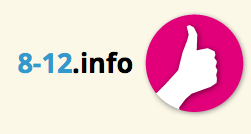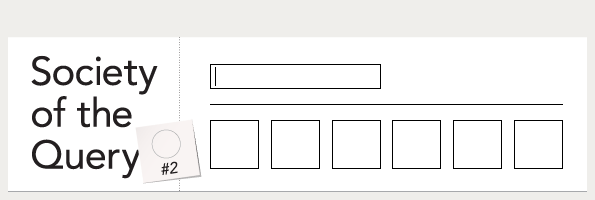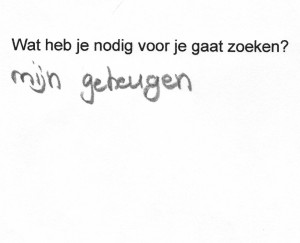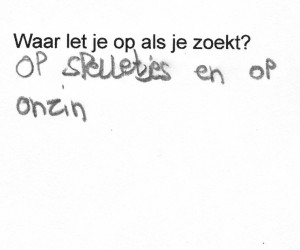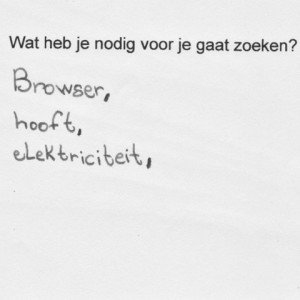This is a participatory observation and literature review of best practices from the field of information literacy and educational information retrieval by children aged 8 to 12 years.
Conclusions and Recommendations in Five Statements
1. Start researching the web content offered to and used by children (qualitatively and quantitatively), now that the internet is becoming a major source of information in schools.
2. Teach teachers and teacher students to investigate what they offer to children from online sources.
3. Add tools and guidelines for children when asking to ‘google it’ in schools.
4. Take care of content for children on the web. Searching for reliable and readable information only can be made successful by adding quality content.
5. Currently available online children’s content should be preserved for the future. Continuity is needed. Too much information that is highly useful just disappears.
About Maarten Sprenger: I am educated as an artist and a teacher in primary education (2003). Since 2006 I’ve been shifting my focus towards art education and information literacy; separately and in mixed projects. I am running the Dutch children’s search engine 8-12.info (started in 2006, 500.000 visitors a year) and published a book on smart searching for children in 2013 (Slim zoeken op internet). I have set up an annotated database on Dutch informative sites for children in 2011. A lot of research on children’s behavior using online information is supported by my own statistics and observations in contact with children and teachers at primary schools.
Smart Searching?
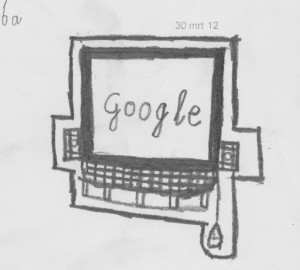 For children searching the internet is like riding a roller coaster in an amusement park. How to choose one’s own route and get useful hits when searching? How to avoid delay and distraction? How to distinguish between nonsense and reliable resources? It’s hard for adults, but even harder for children.
For children searching the internet is like riding a roller coaster in an amusement park. How to choose one’s own route and get useful hits when searching? How to avoid delay and distraction? How to distinguish between nonsense and reliable resources? It’s hard for adults, but even harder for children.
The habitual phrase starting an assignment for children in primary schools is: ‘Go Google it’. Asking ‘how?’ will most often be answered with the advice to use ‘the proper keywords’. Guidelines how to obtain these keywords are rarely included. Maybe some links to a few websites connected to the subject are designated. But assignments are often given without an understanding of the availability of reliable information on the subject and without instructions on how to find this information. Only few teachers have search strategies.
Children are supposed to get used to searching gradually. ’Learning by doing’ seems to be the dominant paradigm. The myth of digital natives (‘children understand by nature how to use the internet and new media, better and easier than adults do’) is still omnipresent. ((An extensive study on this myth is written by Paul A. Kirschner and Jeroen J.G. van Merriënboer, ‘Do Learners Really Know Best? Urban Legends in Education’, Educational Psychologist, 48:3 (2013): 169-183.)) Most certainly Google has effectively lowered the threshold for searching. Larry Page, Google co-founder and CEO, once described the ‘perfect search engine’ as something that ‘understands exactly what you mean and gives you back exactly what you want’. But while readability of texts may be covered in search algorithms soon (and can even be ‘scaled’ from more complex texts into basic reading levels ((Hanna Jochmann-Mannak, Leo Lentz, Theo Huibers, and Ted Sanders, ‘Three Types of Children’s Informational Web Sites: An Inventory of Design Conventions’, Technical Communication 59:4 (November 2012).)), and while reliability in search might be improving (for instance by Google’s algorithms filtering on general quality standards) ((See, googlewebmastercentral.blogspot.de/2011/05/more-guidance-on-building-high-quality.html. Google filters low quality information websites by ranking them out. But this is still an overall estimation of quality, not a substantive appreciation of the content itself.)), the combination of comprehensiveness, required foreknowledge, and reliability for children needs human evaluation.
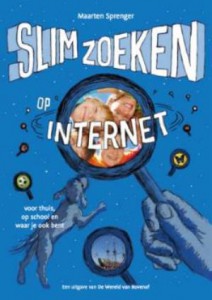 My recently published book Slim zoeken op internet ((Maarten Sprenger, Slim zoeken op internet (Smart Search on the Internet), Self-published, De wereld van bovenaf: 2013.)) is focused on strategies for children to search in a smarter way, starting with proper preparation, then locating the best places for children’s quality information in general and explaining simple tricks like the use of keyboard shortcuts. Children are guided through ways of handling keywords and the most common Google operators like adding quotation marks to a query. Smart searching includes learning general information about the construction and design of web addresses and websites, as well as learning to check who’s producing and editing the information. It also includes the advice to use different search engines from time to time and to (try to) get rid of Google when necessary.
My recently published book Slim zoeken op internet ((Maarten Sprenger, Slim zoeken op internet (Smart Search on the Internet), Self-published, De wereld van bovenaf: 2013.)) is focused on strategies for children to search in a smarter way, starting with proper preparation, then locating the best places for children’s quality information in general and explaining simple tricks like the use of keyboard shortcuts. Children are guided through ways of handling keywords and the most common Google operators like adding quotation marks to a query. Smart searching includes learning general information about the construction and design of web addresses and websites, as well as learning to check who’s producing and editing the information. It also includes the advice to use different search engines from time to time and to (try to) get rid of Google when necessary.
In their early childhood (1-8 years old), children gain many routines on internet concerning games, video and often social media too. And they become used to Google as a kind of index of the web. But while Google may look simple, the web also confuses children – even up to twelve years or older. A general impression: computers are seen as synonymous to the internet, Google is interpreted as the internet itself (and vice versa) and insight into where and how Google relates to websites and their content is completely blurry. Research on children’s surfing habits, supported by my own observation of children in schools, indicate that children cannot focus well on information on a website (and quickly lose the overview); they can hardly make a distinction between advertisements and content; they prefer to play games and chat (rather than aim to find something informative); and children are not concerned whether information is correct. Moreover, they make little distinction between opinions, news and background information. ((Pijpers and Marteijn, ‘Klik en klaar, onderzoek naar surfgedrag en usability bij kinderen’, Mijnkindonline.nl, 2008.)) Actively searching for new information that can be used and understood by children on their own, to boost their knowledge of a certain topic, is also difficult.
Who’s Offering Children’s Information on the Internet?
In the Netherlands a fair number of websites is dedicated to children’s information. Generally the content that is provided looks suitable for the targeted audience. However, the quality of these resources varies greatly, ranging from summing up simple facts (‘did you know…?’) to coherent information systems. Large differences in the presentation are seen as well. Some sites are professionally edited, while others are set up with the ‘best intentions’ by amateur writers/designers. Sometimes museums and institutions offer subdomain or -page especially for children on their websites.
The most important Dutch children’s information providers are established by Public Television, Public Library Platforms and a governmental organization. Some publishers successfully maintain children’s websites as well.
Do the Tools Work?
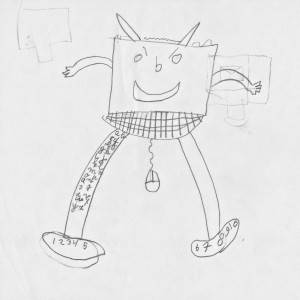 Besides information platforms, children can start at several link portals or sites maintained by teachers. ((For instance: kinderpleinen.nl, surfsleutel.nl and meestermichael.nl.)) The use of these platforms obviously depends on school policies regarding the filtering of online content. This includes children’s search engines, although few children seem to use the special children’s search engines for informational queries – the competition with Google is just too strong. ((Hanna Jochmann-Mannak, ‘Websites for children: Search strategies and interface design’, Three Studies on Children’s Search Performance and Evaluation, 2014.)) When they do use them, it’s mostly just navigational: as an easy way to find an interesting link or a favorite website.
Besides information platforms, children can start at several link portals or sites maintained by teachers. ((For instance: kinderpleinen.nl, surfsleutel.nl and meestermichael.nl.)) The use of these platforms obviously depends on school policies regarding the filtering of online content. This includes children’s search engines, although few children seem to use the special children’s search engines for informational queries – the competition with Google is just too strong. ((Hanna Jochmann-Mannak, ‘Websites for children: Search strategies and interface design’, Three Studies on Children’s Search Performance and Evaluation, 2014.)) When they do use them, it’s mostly just navigational: as an easy way to find an interesting link or a favorite website.
Do kids search tools actually work? I keep track of six of them in a comparative excel sheet, checking results on 25 major primary school keywords. Best finds are done through SchoolTV/Eigenwijzer and my own 8-12.info. Two of the professional ones, the oldest and still most popular search engines for children Davindi (by Kennisnet) and Netwijs (by Station-to-Station), find just an estimated 25% of the available reliable and readable sources at the highest. Meester Sipke (by Pols Netwerk) and Jeugdbieb ((Youth library search engine by IT company HKA, recently (October 2013) acquired by the international non-profit organization Online Computer Library Center.)) show more reasonable results. Other ones often just use the Google Safe Search Filter and don’t provide editorial interventions on the results. Websites with their own search engine such as Kidsweek.nl (supportive website for the weekly newspaper) normally search their own indexed webpages. Most of these informational websites are linked in 8-12.info and all these results are found there as well. 8-12.info is running on a specialized use of Google Custom Search.
I have a limited view of children’s information abroad. My impression is that the German situation is overall quite similar to the Dutch. A range of different providers, three reliable search engines for children/teenagers (blinde-kuh.de, fragfinn.de, helles-koepfchen.de), as well as a strong focus on information literacy (jugenschutz.net). The research I did on public English children’s sites showed a lot of links containing too complicated texts, which were just hosted on child-friendly public sites, and with an emphasis on beta-science as well.
A Summary of the Difficulties for Children Using Children’s Websites
Despite the fact that a large number of websites is dedicated to children, the overall information experience by children on the web is affected by:
* Mingling children’s information with content for adults (for example, teachers) or other age groups (like preschoolers or young people). This especially happens on educational platforms.
* Advertising (distracting on purpose by the nature of it).
* Quantity instead of quality.
* Semi-child-friendly interfaces and web design which are often unintentionally distractive. ((Hanna Jochmann-Mannak, Leo Lentz, Theo Huibers, and Ted Sanders, ‘Three Types of Children’s Informational Web Sites: An Inventory of Design Conventions’, Technical Communication 59:4 (November 2012).))
* Problems of site-maintenance, such as keeping links up-to-date, avoiding dead links and use of editorial checks on the content are ubiquitous.
* Problems concerning bad archiving: useful information can be gone the next day. Even the platforms themselves don’t succeed in (or care about) hosting valuable content that fell out of grace in a new menu structure or database plan. (Should we teach children to use the Waybackmachine?) ((The field of children’s websites has been expanding (2006-2012). But things are changing fast now, because publishing models are changing, governmental support decreases and other subsidy flows dry up as well. Museums can’t afford to maintain a kids-page anymore, if they had one. SchoolTV/Eigenwijzer is coming to a halt somewhere during 2014 and maybe Teleblik as well (since public broadcaster NTR stops contributing) . The well-used Schoolbieb.nl (‘school library youth site’), part of the website of the Dutch public libraries has disappeared due to a change of policy for two years. (But Bibliotheek.nl recently started a new extensive kids part.) And what will happen to the popular history site entoen.nu? What will happen to the national history website INNL.nl – which is a strange legacy of the National Historical Museum, that never has been established itself: it has been kept online so far, but is it going to be continued?))
One can detect quite a few gaps in the subjects publicly available for children on the web as well. Examples of what is missing are geography, art (including music), philosophy and religion. On children’s platforms and in children’s search engines these gaps are often filled with ‘hard-to-read’ information, such as texts for adults or teachers. Or they are filled with ‘non-reliable’ sources like amateur info and teacher-student exercises (containing a vague mixtures of facts, sometimes even misinterpreted facts), child-to-child sources like spreekbeurten.nl or superspreekbeurt.nl (both aimed towards making presentations) and the media-literacy project Wikikids that teaches children how to run a wiki. But Wikikids contains a lot of copied info from Wikipedia and non-descript sources. Also many cool technique sites show great experiments and fun tools, but sometimes lack clear explanations and don’t have comprehensive textual and searchable background information.
Searching for Information as an Assignment on Primary Schools
What kind of queries do children have to solve as a task at school and where do these queries originate? Examples of such assignments are: ‘Answer the questions in this text.’ ‘Who was the first Christian Roman emperor?’ ‘Make a project about your favorite animal.’ ‘Create a mind map about the big bang.’
Language lessons include text comprehension. Methodical lessons in schoolbooks are followed by assignments in special workbooks to process and rehearse what has been read or discussed. In both types of lessons the questions are pre-formulated. Answers can be found in the textbooks (or sometimes in TV-programs like Klokhuis or Jeugdjournaal.)
Special assignments like presentations and papers are usually in the line of very general subjects: animals, football, pop stars and so on. Causing queries about ‘rabbits’, ‘FC Barcelona’ or ‘World War II’. It mainly depends on individual teachers whether such assignments will help children develop initial research skills and ‘knowledge construction’, as needed in addition to knowledge reproduction (and which is preferable over copying). Teachers who can change a quiz into a quest are needed to reach that goal.
Nowadays primary schools in the Netherlands in general don’t focus on teaching factual information any longer. The emphasis has been put on language classes and math. Together with useful ad-hoc projects such as art education, media literacy ((The Dutch term mediawijsheid (more or less to be translated as media wisdom) is the overall term for ‘media literacy’ in the Netherlands. It started with safe internet and anti-bullying tips, accompanied by lessons, training and discussions. It sometimes includes a focus towards information literacy.)) and school gardens, often too little time remains for a methodical curriculum concerning history, geography and biology. It’s debatable which subjects should be included (and for sure not just the remarkable highlights of the different subjects). But to be able to look up something later, basic knowledge for reference is necessary. We can detect an upcoming knowledge problem here. Skipping the comprehensive use of schoolbooks – telling children to ‘Google it’ – brings in the responsibility to understand if and where quality content can be found. It looks as if googling is a simple task, because there is so much information online, but the supply of understandable, suitable information for children is low. Internet is not as complete as we think it to be. Schools should be aware of that. Are teachers ‘media-wise’ themselves? Do they understand what is available and are they capable to teach children how and where to retrieve content through the internet? Do they design and share information, or tools and teachings? ((A big project like the shared educational resources database Wikiwijs has not been successful. It recently merged with another similar project Leermiddelenplein (SLO) to remain online. On the other hand the Belgium instructional network KlasCement is used very well.)), ((Maybe the educational use of apps will replace the previous use of methodical educational books (including their continuous learning lines). But so far it’s unclear which combination of apps will be able to replace these schoolbooks. Many educational publishers experiment on this by adding digital content to their printed products (apps, websites, videos, games). Lots of new platforms are launched as well: many foundations, companies and teacher-groups are offering services to choose wisely. But for schools and teachers it’s still hard to check the value and to predict which choices will be valid next year too and therefor are worth to invest time or money. Meanwhile the digital revolution of digiboards in the classroom brought not much more than a modern appearance of an old tool. Digiboards are hardly used to their advantages (Samen leren, het onderwijs volgens generatie Z. Now It’s Our Time (NIOT) en Kennisnet, 2013).))
Having a Question: A Small Reflection on the Impulse for a Query (8-12 Years)
‘Did Starwars really exist?’ ‘Was the Sun born earlier than the Earth?’ or ‘Where do words come from?’ While focusing on searching for children’s information, we have to consider this: where and how do questions arise in children? Asking questions is what children do spontaneously all the time, out of curiosity. Triggered by all kinds of activity, there is always need for information. Throwing stones, balls, sticks, flying paper planes or bridges, meeting a dead animal or growing seed, it all provides an arsenal of emotions, expectations and results. Children are constructing knowledge at various moments and in various situations. One child makes a question from his ‘research’ explicit and takes the question home, to his family environment. The other child processes his experiences less consciously. But the goal remains to find an answer providing insight or better results – further, higher or more spectacular.
During high school, internet will become the first source for a query, but at the age of 8-12, consulting friends and family is still the first step in the search for answers and solutions. ((J. Schamp, J. Jongbloet, P. van der Kreeft, et al., Infoscan. Onderzoek naar informatiezoekgedrag bij kinderen, tieners en jongeren. Faculteit Mens en Welzijn Hogeschool Gent commissioned by De Ambrassade, 2013.)) Small experiments are conducted together. Short and long answers are given, told by heart. From time to time something is looked up on the internet. Maybe a video of similar experiments will be found online and conversely be translated into the offline situation.
The natural environment of the child itself can be seen as the context for these questions. Curiosity and marvel are involved. In the school context – all children go to school and make assignments that are usually created by adults – things are different. There the search for answers is caused less by the intrinsic needs of a child: queries are often assigned top-down. Fortunately, an increasing interest in shifting from ‘must learn’ to ‘want to learn’ is visible.
Besides the Web, Where Else Do Children Look for Information?
Children still gather a lot of information from TV programs at home. ((Samen leren, het onderwijs volgens generatie Z. Now It’s Our Time (NIOT) en Kennisnet, 2013. http://www.kennisnet.nl/index.php?id=25689.)) They watch commercial information channels such as National Geographic Channel, Discovery Channel and Animal Planet. The information presented in the documentary footage shown is very visual and easy to follow. Children watch a lot of YouTube-movies as well, but as far as I know, mainly stunning and funny ones. Tailor made for children aged 8‑12 are the mini-documentaries of the popular national TV broadcaster NTR: Het Klokhuis, Jeugdjournaal and SchoolTV Weekjournaal. ((See, www.hetklokhuis.nl, www.jeugdjournaal.nl, www.schooltv.nl/weekjournaal, www.ketnet.be.)) In Belgium children watch Ketnet. All of these programs are watched both at home and in classrooms.
Children watch a lot of common adult shows as well, varying from soap operas like ‘Good Times Bad Times’ to the eight o’clock news. It’s hard to deny the effect of these shows on the general development of children. Soaps like Good Times Bad Times or Spangas ((Spangas is the name of a high school. It’s a long-term and good views series from public broadcaster NCRV.)) bring loads of editorial subjects, sometimes paid for or sponsored by a topic group (focusing on cancer, handicaps, bullying). The recent study about ‘Generation Z’ (Now It’s Our Time/Kennisnet 2013) shows that children learn the following things from TV: English, ‘what’s happening in the world’, stuff about animals, about other countries, and about people and their behavior.
High quality informative children’s books, most of them originally published in the UK, are still for sale, re-published in the Netherlands by Ars Scribendi among others and sold in specialized bookshops, but mainly bought and collected by public libraries and a decreasing number of school libraries. There’s no equivalent on the web to these splendid series, with separate volumes containing quality information on countries, religion, sustainability, the elements and so on.
One publisher offers web info in a combination with books: De Ruijters Information center (Noordhoff Publishers), well known for its Junior Information booklets maintains a web version as docukit.nl. Parts of these books are publicly available on the web too. Children are redirected to read more extensive information in the booklets themselves. It’s a peculiar combination: a webpage telling you to ‘read more in the book’. Fortunately primary schools have big shelves containing this series (over 550 volumes from Coal Mines tot Biological Food), and still renew their collections by subscription. Docukit.nl publishes new booklets each year, but the website does not seem updated that regularly.
It is often thought that children read less and less. Books are considered to have fallen from grace. The aforementioned recent study by Now it’s Our Time shows that children still read a lot of books at school and do appreciate that. In a way that’s not a big surprise: the reading experience in books is far better than on screens – and in that way still uniquely useful. To compete with that is difficult, despite the great and overwhelming new possibilities to search, handle and reuse information on electronic devices. Another reason has a more practical nature: school computers are often old and not available to all children all the time.
Children’s Information Experience in Apps and Games
Lots of providers of children’s information are mixing spheres. By resolving problems in games, it becomes fun to retrieve information. ((In my opinion quite a few museums know very well how to present a broad quality information experience (Amsterdam Museum, Tropenmuseum, Rijksmuseum voor Oudheden Leiden and Naturalis, to name some Dutch examples). The information experience here is a mixture of physical activities, video presentation, animations, apps, quizzes and (computer) games, with the possibility to look up, reread or review something later, or to prolong the joy by playing a tablet or webgame at home.)) It’s a more personal experience instead of a one-way ‘sender to audience’ product; pull instead of push. But an important question rises in this context: do videos, games, apps, and environments offer searchable information? How can one retrieve previous experienced information? Jokes, clothing, and visual effects may all attract more attention than the content, which might get more or less absorbed, but can be hard to reproduce. ‘Got the impression, liked the show, but what did they say about…?’
Dutch children’s TV-archive Beeldbank (a video database) provides searchable voice over texts on the web next to the videos, which is a good step forward. YouTube is subtitling spoken voice-overs, probably resulting in better search possibilities. But searching the video image is only beginning; for a long time yet this will depend on text and metatagging.
Text can be scanned easily, a book can be browsed, but it is less easy for a child to determine whether watching a video will be worth his or her time. Being willing to watch a video mainly depends on being tipped or conducted wisely.
Information literacy is included in language classes by the nature of the subject: reading comprehension skills are part of information literacy. But schools are teaching these techniques first of all with regard to traditional media. There’s nothing wrong with that: school library books are still well used (although budgets on school libraries seem to decrease). But schools ask children to use internet and video’s without upgrading the information retrieval techniques. Children are not being taught how to read and deconstruct video in the same way they are taught to read and deconstruct printed texts. I encountered the phrase ‘viewing comprehension’ as comparable to ‘reading comprehension’ only recently. And are children taught how to understand websites the same way they learn to understand texts in books and magazines? Hardly.
Most videos (apart from instructional animations) can be seen as even more persuasive than text or pictures, because of their straight and compelling time-based nature. They are much harder to analyze on a school level than texts are. But the slick combination of numerous layers of voice-over, moving image, graphics, sound, and music provide a complex mix, making it even more important to learn to analyze it early on. Children have to learn how to watch. They must learn reading and writing with all kinds of media.
Readability and Reliability
One last important issue for children is the evaluation of information: how can children judge whether a found piece of information is useful, when they are asked to Google something? Three interconnected subjects concerning online search are:
1. Is the information technically readable and understandable? This depends on a child’s vocabulary and reading skills (Dutch: AVI-level). ((This includes all connected texts that introduce and accompany a video. To understand whether a video is worth viewing, a child has to be able to read its summaries, understand the comments, tags, et cetera.))
2. Does the young reader have enough foreknowledge to understand the details of the content offered? Young children cannot understand the meaning of the underlying pre-concepts without higher education, even when they are able to technically read it. This notion marks why for instance Wikipedia is mostly not a good source in primary education: there’s a big amount of ‘high-school concepts’ included in the wiki-texts. ((See ‘Trust in Online Information’, Teun Lucassen 2013. http://teunlucassen.nl/wp-content/uploads/2013/02/Teun-Lucassen-Trust-in-Online-Information.pdf.))
3. Are the sources reliable? Especially now that the financial balances in schools tip heavily towards investments in equipment rather than content, this issue poses an expanding problem. Besides the question whether children are provided with a proper set of basic tools to find the information, there is a shift in education from the use of school methods towards web info. And who cares about the quality and the reliability of this information? Who pre-reads this info? Are teachers trained to check, judge and evaluate quality? ((Open University/Celstec recently started a series of Masterclasses to do so. An example: ‘Hoe beoordeel je multimediaal leermateriaal?’ (How to evaluate educational multimedia sources?) Oct/Nov 2013.)) Is it a part of student teacher training? Or do children have to check all different sources themselves? Is that what they should be taught? To my opinion this is not the right and not even a fair question. One can only check reliability based on previously acquired knowledge. To become familiar with a subject, reliability is a precondition. Schools should learn to understand this responsibility better.
Finding reliable readable information for children on the internet is not a hot topic. Of course the makers of serious platforms care – and do a great job. But far too few people are concerned with how well or bad children get informed through the internet in general. Within the strategies to teach children to search smarter, this is the hardest part: a child cannot check on its own whether information is reliable.
Over the years I’ve found extensive studies on how children behave on the internet, how they use websites, how they retrieve and process information. So far I could not locate any Dutch studies on the quality of internet sources made for and used by children. Recently I discovered two foreign ones in Belgium ((J. Schamp, J. Jongbloet, P. van der Kreeft et al. Infoscan. Onderzoek naar informatiezoekgedrag bij kinderen, tieners en jongeren. Faculteit Mens en Welzijn Hogeschool Gent commissioned by De Ambrassade, 2013.)) and in Germany. ((Informationsverhalten von Kindern im Internet, Dr. Christine Feil, Deutsches Jugendinstitut München 2013.))
Most people refer in this context to innumerable projects on media literacy, mainly focusing on the important matter of safety on the internet (privacy, personal safety on social media, data safety). Sometimes they refer to information literacy and underline the importance of developing an information strategy. I addressed this in the book Slim zoeken op internet as well. But the overall quality of free public sources for primary education is not attributed. Schools generally adopt just one of the well known educational platforms like SchoolTV, Kennisnet, Meester Sipke, 8-12.info, Leerwereld or Surfsleutel (in all their diversity). Or sometimes subscribe to paid sources like Teleblik or WP-Junior.
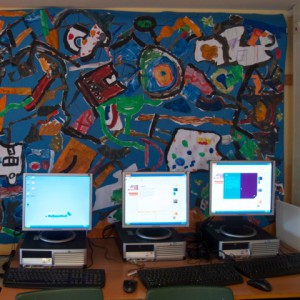 In general lots of people might think that the quantity of information on the internet equals, or at least includes, quality. That obviously is not true. Information needs editors and editing. Just bookmarking and ranking sites (or apps) is not enough – and covers up the problem. The amount of vague information on compilation sites is increasing rapidly. ((A practical and private example. My son (12 at that time) came home from his (former) high school. He showed some deeplinks presented by his teacher for an assignment. The following sites were involved: infocash.nl, absolutefacts.nl and bertsgeschiedenissite.nl. All three containing amateur info. I suspect the assessment of sources is frequently omitted, like here. The teacher might be considering ‘if it’s just about true, it’s OK’ and justify it by thinking: ‘they will learn more/better later on, it’s just the first step’. The author Bert (from the last site) even warns the readers: ‘I’m just an amateur writer, although I love to find proper info’. But in the case of infocash.nl it’s much worse: elsewhere on the site absolute nonsense is published, including texts like ‘monkeys are smarter than humans’ or doubting evolution. )) Hans Maarten van den Brink, the director of the Dutch Media Fund, stated on 9 December 2013 in NRC Handelsblad: ‘What is left of journalism? Free internet is increasingly replacing paid newspapers. Where is the reliable news?’ This runs parallel in children’s information. The check is not only needed because of potential violent or sexually unwanted content, but because in schools we should raise children along the line of proper basic information. It would save them a lot of time and confusion. Isn’t that what schools are for? Presenting reliable information, as a base for future knowledge?
In general lots of people might think that the quantity of information on the internet equals, or at least includes, quality. That obviously is not true. Information needs editors and editing. Just bookmarking and ranking sites (or apps) is not enough – and covers up the problem. The amount of vague information on compilation sites is increasing rapidly. ((A practical and private example. My son (12 at that time) came home from his (former) high school. He showed some deeplinks presented by his teacher for an assignment. The following sites were involved: infocash.nl, absolutefacts.nl and bertsgeschiedenissite.nl. All three containing amateur info. I suspect the assessment of sources is frequently omitted, like here. The teacher might be considering ‘if it’s just about true, it’s OK’ and justify it by thinking: ‘they will learn more/better later on, it’s just the first step’. The author Bert (from the last site) even warns the readers: ‘I’m just an amateur writer, although I love to find proper info’. But in the case of infocash.nl it’s much worse: elsewhere on the site absolute nonsense is published, including texts like ‘monkeys are smarter than humans’ or doubting evolution. )) Hans Maarten van den Brink, the director of the Dutch Media Fund, stated on 9 December 2013 in NRC Handelsblad: ‘What is left of journalism? Free internet is increasingly replacing paid newspapers. Where is the reliable news?’ This runs parallel in children’s information. The check is not only needed because of potential violent or sexually unwanted content, but because in schools we should raise children along the line of proper basic information. It would save them a lot of time and confusion. Isn’t that what schools are for? Presenting reliable information, as a base for future knowledge?
Updates will be published on sprengeronderwijs.nl/sotq2
I wrote a proposal (in Dutch) for teacher-students to do both research on the matter and start teaching editorial, reflective and social-media skills is published at sprengeronderwijs.nl/onderzoek. I look forward to find educational institutions (PABO’s) join the project at www.onderwijsbronnen.nl.
Extra References/Recommended Reading
Jos de Haan en Remco Pijpers (redactie), Contact! Kinderen en nieuwe media. Bohn Stafleu van Loghum, 2010.
Els Kuiper, Teaching Web Literacy in Primary Education, proefschrift Vrije Universiteit Amsterdam, 2007.
Joost Schellevis, Internetwijsheid – Vaardigheden van kinderen met informatie op internet. Scriptie i.o.v. St. Krant in de Klas, 2012.
Stichting Kennisnet/Edwin Schravesande, De betrouwbaarheid van internetbronnen. Kennisnet Onderzoeksreeks nr.12, 2009.
Maarten van Veen (redactie), Door de bomen het bos – Informatievaardigheden in het onderwijs. Open Universiteit Nederland, 2005.
Amber Walraven, Becoming a critical websearcher. Effects of instruction to foster transfer – Proefschrift. Open Universiteit Nederland, 2008
Belgian website focusing on youth information research and a good starting point for these references: www.jeugdinfotheek.be/alle-onderzoeken-en-artikels
Thank you: Miriam Rasch and Rene König (Society of the Query), Joek van Montfort (Scratchweb), Remco Pijpers (Mijn Kind Online), Ulli Behrens (Jugendschutz.be), Liesbeth van de Kar and Jacinta Louwes (NTR), Sofie Iserbyt (Ambrassade Brussel), Nina Hoek van Dijke (Jong & Je Wil Wat) and Karin Rekvelt.
